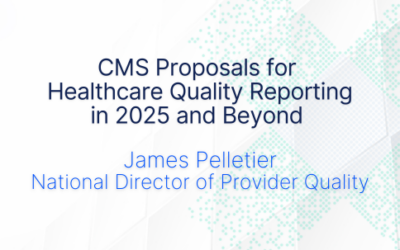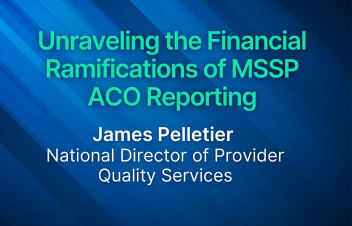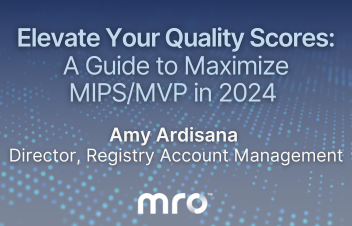A New Frontier: ACOs and the Shift to Electronic Clinical Quality Measures
Healthcare quality reporting is evolving, and accountable care organizations (ACOs) are at the forefront of this change. In 2025, ACOs will be required to shift from traditional quality reporting via the CMS Web Interface to electronic clinical quality measures (eCQMs), marking a significant transition in their reporting process.
This transformation aims to enhance patient care quality and better align ACO reporting with the Quality Payment Program (QPP) Merit-Based Incentive Payment System (MIPS). Reporting via eCQM is optional in 2023 and 2024, but it becomes mandatory in 2025. Several ACOs have already started reporting via eCQM with positive results. These organizations received concessions from CMS to serve as early adopters and test the system.
For example, one large ACO in the Southeast started reporting via eCQM in 2020 across multiple provider EHRs. According to the ACO, “The concessions from CMS have been financially beneficial while also giving us time to expand reporting and continually improve our process.” But other ACOs are only just getting started.
This article shares four best practices to consider as organizations prepare internal teams, update information systems, and analyze their quality data to ensure optimal quality reporting under eCQM.
Multiple EHRs Present Unique Challenges
First, it is important to understand the key changes that ACOs will face in 2025. The number of measures will be reduced to three, but they are now applicable to the entire patient population, regardless of payer. This marks a departure from the previous requirement to report only 248 sample Medicare patients. Moreover, ACOs must submit these measures electronically via API, a technical requirement for which each organization without an API-enabled submission partner will be required to find a solution.
Due to the lack of uniformity in documentation standards, varying accessibility, and outdated systems making data abstraction difficult, reporting data across multiple EHRs can be a daunting task. The central challenge for ACOs is to aggregate data from diverse EHRs, normalize it, and identify and address care gaps. This preparation is crucial for successful quality reporting via eCQMs. However, it offers new opportunities for cost and quality improvements across providers.
The ACO mentioned above pulls patient data from 11 disparate EHRs for eCQM quality reporting. With assistance from MRO Crop., a clinical data exchange company, the ACO has continually aggregated and analyzed quality data across all their participating providers since 2019 to:
- Measure practice performance for each quality measure across all patients
- Fine-tune clinical documentation for each measure
- Streamline the reporting process
- Improve care quality
- Increase transparency into quality performance at any time
- Work by exception for missing measures data
Change management will be a significant challenge, with the entire patient population requiring uniform review regardless of payer. Training, workflow reengineering, and quality assurance will be essential components of this transition. Here are several strategies to consider.
Five Strategies for Effective Preparation
The following best practices have proven effective in our experience working with ACO customers.
- Implement a best practice process for data. Aggregating data workflow is essential. Once you can aggregate and analyze the data, you can identify and address gaps strategically. Establishing a baseline for performance measurement is key to ongoing monitoring and improvement.
- Prepare to manage data complexity. Data integrity and timeliness are crucial. Data quality remains a concern for many ACOs, with 69% rating their patient data quality as mixed or poor. Leveraging organizations like the National Committee for Quality Assurance (NCQA) to validate clinical data is recommended.
- Identify and close gaps now. ACOs should actively collect all necessary data for quality scoring and measure calculations while closing any existing data gaps. This includes understanding current performance and identifying patients who do not meet measure criteria.
- Collaborate and educate. Effective collaboration with practices is essential. ACOs must educate their providers’ teams to ensure documentation is done correctly. Focus on primary care providers (PCPs) for most of the training since the initial set of measures is most often documented in primary care, such as depression screening and hemoglobin A1C monitoring.
- Reduce redundancy. Identify providers that are best suited to document measure screening and interventions. In this way, only specific providers’ teams and systems are required to capture quality information versus all practices across an ACO.
Ready. Set. Go.
2024 represents the final opportunity for ACOs to test data aggregation and compare quality outcomes to the new measures across all populations, not just a sampling of Medicare patients. Therefore, it is essential for ACOs to use their time wisely.
Preparation is imperative and ACOs should consider the practical strategies outlined in this article to ensure they are ready for mandatory reporting requirements in 2025.


